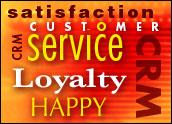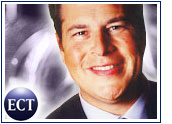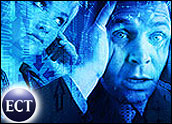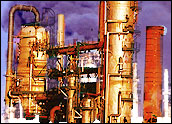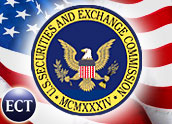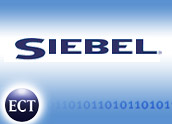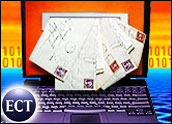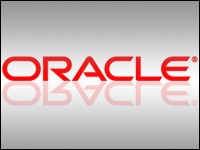
Like many entrepreneurs, Eliphalet Remington II thought that he could produce something better. So in 1816 he turned to his father’s forge at Ilion Gulch, New York and began working on a better rifle. At that time he wasn’t worried about supply chains or customer-relationship management. But almost 200 years later, his one-man startup is Remington Arms Company, a US$360 million enterprise selling firearms and other products in over 60 countries.
In an interview with CRM Buyer, Ned Moore, Remington’s e-business manager, said that producing products over such a long time means that company has a multigenerational brand. “We have callers whose parents and grandparents were customers,” he said. “It also means that we frequently deal with old products not in production, but ones having an intimate connection to the owner because it might have been in the family for generations.”
Chris Selland, vice president of supply-side research at the Aberdeen Group, an industry research firm, told CRM Buyer he sees Remington facing the same challenges that any company selling a dangerous product would face — the need to keep customers abreast of important information and responding to them accurately, consistently and quickly.
Wanted: Competitive Advantage
About four years ago, Remington was seeing about two million visitors a year on its Web site and also was getting about 1,000 e-mails and 6,000 calls a week, Moore said. To handle that volume, Remington employed 19 customer service representatives.
“Most of the company’s calls and e-mails were about general information – how do I get catalog or owners manual — but it took one of our customer service representatives (CSRs) to answer that,” Moore explained. “Back then, we were responding to e-mails in about 48 hours, when many people in our industry were responding in weeks.”
In 1999 Remington began looking for ways to improve customer relationships, reduce the number of e-mails, gain a competitive advantage in the industry — and also reduce costs. Remington looked at many ways to solve this problem, including designing an in-house solution, looking at smaller CRM vendors, like Kana — even high-end solutions — but “they all seemed either to have only a part of the solution we wanted, or were cost-prohibitive,” Moore said.
Moore explained that Remington was planning for future call volume growth and selected hosted CRM vendor RightNow because RightNow provided Remington with a strategic way to “raise the bar” for customer support in the industry, promised to reduce their e-mail and call volumes, as well as contain their support costs. According to him, the company saw payback in one month.
Special Needs
Esteban Kolsky, research director of CRM and e-business at industry research firm Gartner, told CRM Buyer that he didn’t think that full-blown CRM would fare well in the firearms business because traditional CRM is aimed at increasing customer sales by cross selling and letting people know about special promotions.
Kolsky also suggested that many companies selling firearms might be reluctant to share their customer information, making a CRM solution hard to deploy. The firearms business — like many regulated business, such as pharmaceuticals and mortgages — needs to track many specific product details.
Moore acknowledged that the company has legislative issues to track — one of those being the serial numbers on every gun sold. However, this aspect of the business is handled by an in-house system, and he didn’t see a fit with the RightNow solutions right away.
Well-Received by Customers
But after selecting RightNow technology as a way to reduce costs, manage e-mail and inbound calls to better improve its customers’ responsiveness, Moore said that the company began a big customer data-mining effort.
According to Moore, Remington’s customers are mass merchants, large chain stores, firearms wholesalers and independent gun shops.
“When we started, we realized that we didn’t know some of our customers, and at first, the wholesalers worried that we were making an end run around them like other companies had done,” Moore explained. “It took time for them to warm up, but now it’s well received and they provide us with their customer information in quarterly updates showing us what products are selling well and much more.”
Call Center Improvements
While Remington runs its sales, distribution and finance operations on SAP and its repair service on a hybrid of SAP and an in-house solution, it now runs its customer support using two RightNow modules: RightNow Service, which is a multichannel customer-service module, and Locator, a Web-based location finder that helps potential customers research a company or a company’s offerings.
Moore said that these two products brought about a reduction in the number and type of calls the company received.
“Between 1999 and 2003, we saw an overall 23 percent reduction in all phone calls and a 30 percent drop in general operator and consumer calls,” he said. “Now we are seeing more technical calls – calls, for example, regarding products that are no longer in production or the historical story of a gun.”
Average call volumes dropped from 6,000 calls and a thousand e-mails per day in 1999 to around 4,500 calls and between 500 and 1m500 e-mails per day in 2003, Moore said. In addition, Remington’s call-abandonment rate — callers who hung up before they were connected to a CSR — reduced by 50 to 75 percent.
Moore pointed out that the difference in the call volumes and drop off rate is seasonal. “Our peak is hunting season from Labor Day through Thanksgiving and then in we see a smaller peak for turkey hunters in the spring,” he explained.
Currently, Remington has claimed to have saved more than $530,000 each year using RightNow self-service technology. Through attrition, the company has reduced its CSR staff by five, for a total of 14, each of who handle between 16,000 and 18,500 calls per year.
“That was a great productivity improvement,” Moore remarked.
Self-Service Advantage
For his part, Gartner’s Kolsky said that just using a few CRM self-service functions is an ideal solution for to reduce customer interactions before and after the sale, while also reducing customer support costs.
Its customer self-service solution means that the company can track questions, and, when it sees a new one on the rise, it can quickly update its knowledge base to respond, Moore said. As a result, offloading such frequently asked questions, Remington’s CSRs now are required to be better trained.
“Four years ago, they were ready for the phones in a couple of weeks and learned a lot on the job,” Moore observed. “Now it takes a CSR four to six weeks to get fully trained, because they are answering more technical questions.”

